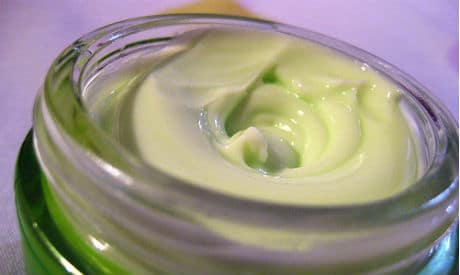
I’m a face cream junky. But I can’t imagine paying $900, $875, or even $575 for a cream that’s supposed to drive collagen and elastin to the cells that need it the most and to fulfill our desire to look younger.
Apparently, even without my contribution, these products are flying off the shelves. Sales for high-end creams have risen eighteen percent in the last year. Crème de La Mer, created over thirty years ago, was the first of the high end moisturizing products. Touting a miracle broth, an 8.5-ounce jar currently sells for $900 – ouch!
According to the sales people at some of our pricier shops, women also buy these products to avoid cosmetic surgery. I guess they figure they are saving money in the long run.
The ingredients in these products vary so greatly I wonder how I would choose one even if I wanted to. Here’s a list gleaned from Kavita Daswani’s article in the Los Angeles Times, “A Pretty Penny for Prettier Skin”:
- Fermented kelp
- Bee venom
- Blackberry leaf extract and oils of grapefruit peel, lime, orange bergamot and ginger
- Unnamed organic extracts
- Protein, lipids, trace minerals, amino acids, peptides
- Resveratrol – found in red wine and grapes
- Tourmaline and sequoia buds
- Cocoa beans and inchi seed
- Java tea extract
- Artic salmon
- Gold particles bonded with peptides
- Stem cell extract
- Barley extract, glucosamine, mushrooms
- Snails – My husband even fell for an ad for a face cream containing snails. Then he decided to give it to me. I tried it a couple of times, but failed to see any instantaneous plumping – what it was advertised to do – so I put it back on his grooming shelf.
Daswani cites Dr. Timothy Jochen, associate clinical professor at the University of Southern California and the founder of the Contour Dermatology and Cosmetic Surgery Centers around Southern California, in the article. “He says that the new round of pricey skin-care products often pitches an exotic ingredient that promises to work miracles on the complexion without necessarily offering any clinical evidence that it actually does so.” He states in her article, “…the price tag is really more about prestige and status," adding that “certain ingredients have been proved effective in skin improvement, including retinoids and glycolic and alpha hydroxy acids.”
Jochen continues, “But you can find those in more inexpensive products. I would recommend that instead of spending several hundred dollars on a cream, people put that towards a treatment like a chemical peel, where you can really see results. Mostly everything else is just very expensive moisturizing."
That’s exactly what my dermatologist told me years ago, and I guess The Food and Drug Administrationalso agrees. According to the FDA, companies like L'Oreal and Avon exaggerate the benefits of their skin cream products by making them sound like drugs with properties that can change our body’s structure or function. I can’t imagine a cream that sits on the top of my face ever doing that.
And even though I thoroughly believe my dermatologist and other experts, I still want to believe the ads for these so-called wonder skin products. Luckily I haven’t succumbed and spent my wad on the pricey ones. I still only buy the inexpensive spread.
I also follow my dermatologist’s advice to slather on a heavy-duty 60 SPF sunscreen that contains zinc oxide on my face and other exposed parts of my body everyday, wear a hat when I’m out in the sun, and moisturize with a low-end product morning and night. I sometimes layer a tinted moisturizer with an SPF of 45 over the sunscreen as well. That along with my twice-a-year botox injections to smooth my forehead and prescription doses of Retin A and hydroquinone to fade those pesky dark spots is the only anti-aging help I need. Well, perhaps I’ll go for a chemical peel one of these days too.
Madeline Sharples is Naturally Savvy's Over 60 Expert. An author, poet and self-confessed exercise junkie, her stories and articles have appeared online and in print. She recently published her memoir, Leaving The Hall Light On: A Mother’s Memoir of Living With Her Son’s Bipolar and Surviving His Suicide (Lucky Press LLC 2011). To read more of Madeline’s writing, visit www.madelinesharples.com. To contact Madeline, e-mail her at [email protected].
Read more:
Natural & Organic Skin Care
Living with Age Spots
Photo credit: sunshinecity










